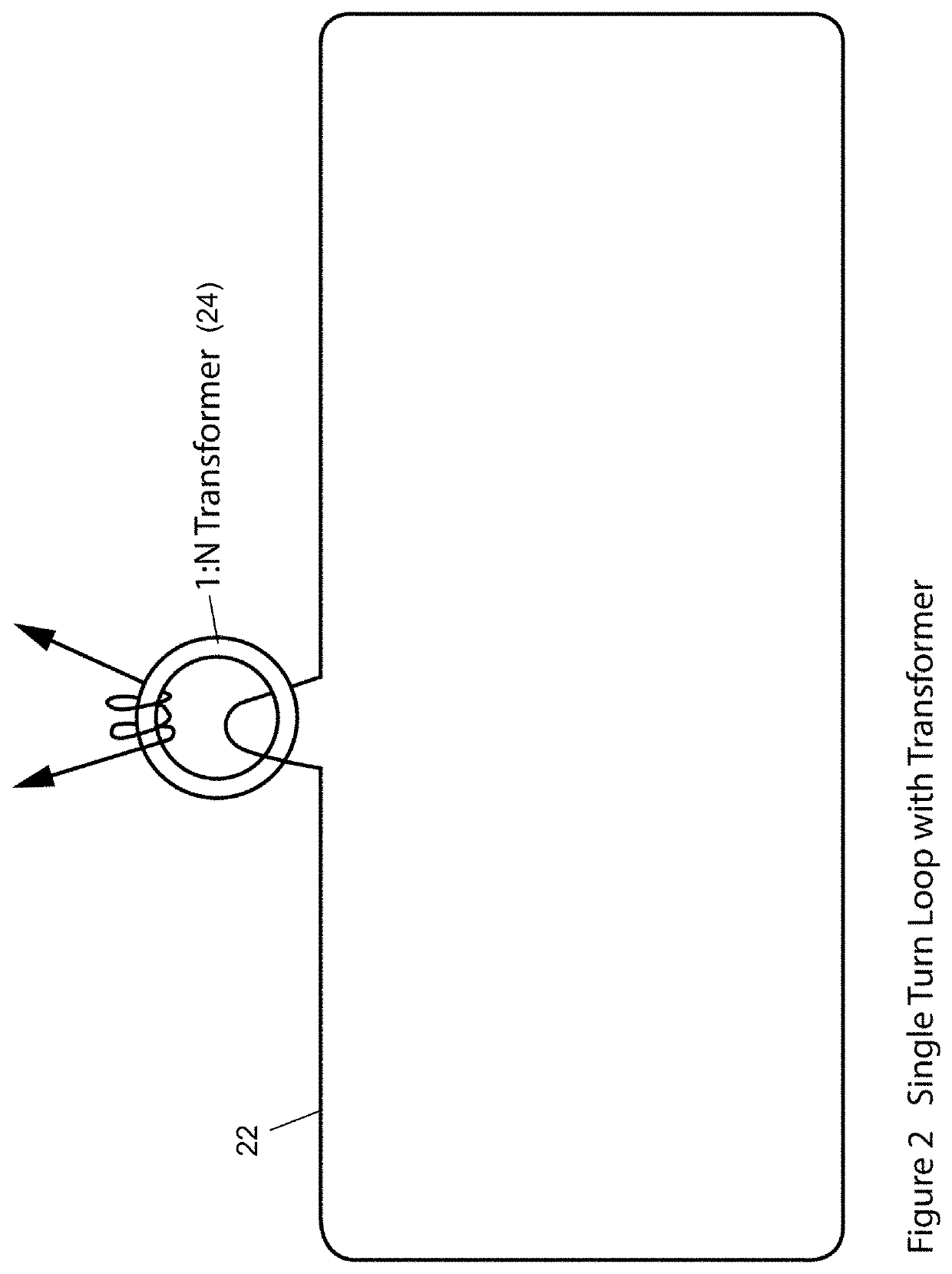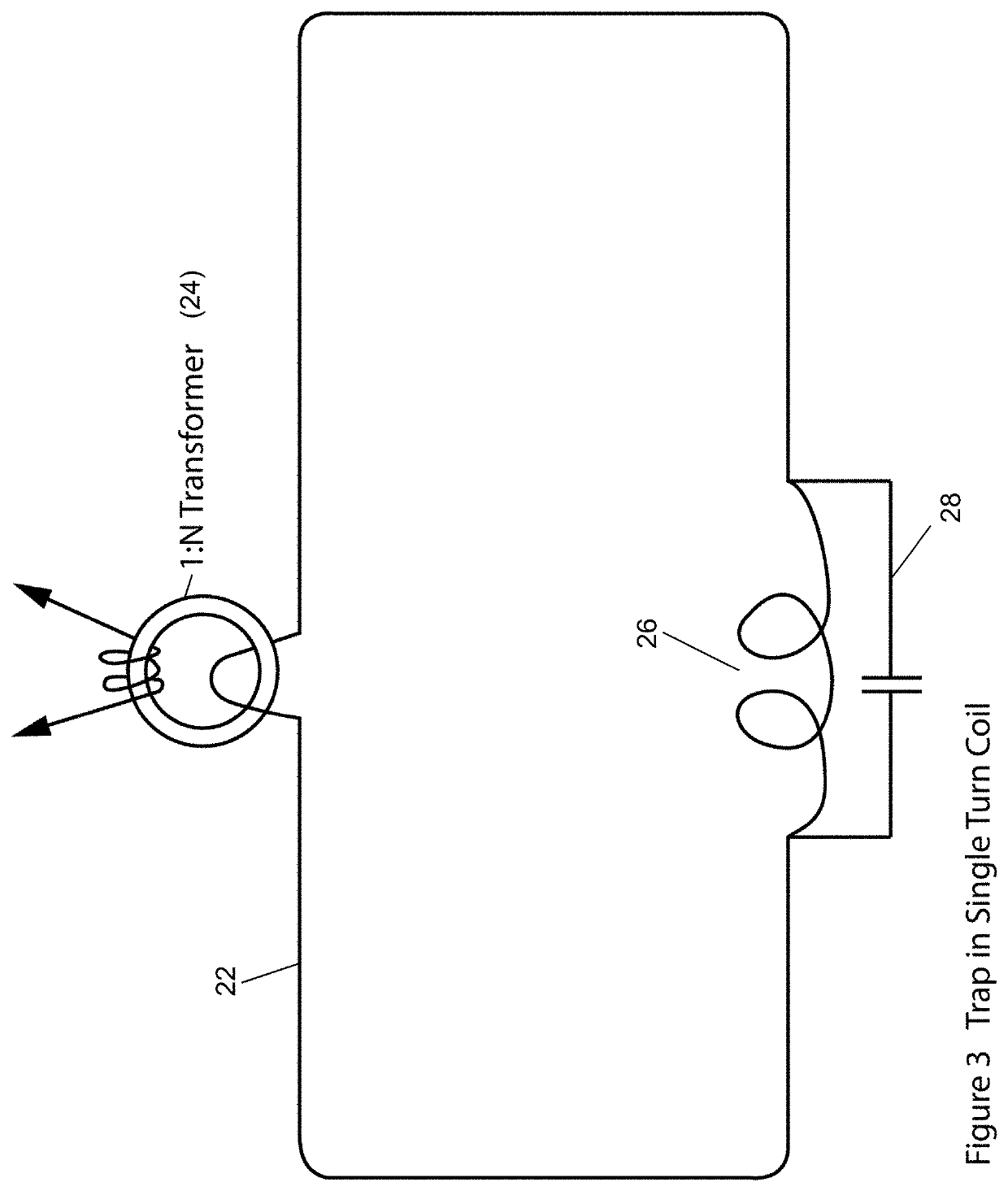Techniques for co-siting a metal detector with another detector
a metal detector and cositing technology, applied in the field of cositing metal detectors with other detectors, can solve the problems of two detectors interfering with each other, difficult to operate other sensors on the same head, etc., and achieve the effect of reducing the effect of the coil
- Summary
- Abstract
- Description
- Claims
- Application Information
AI Technical Summary
Benefits of technology
Problems solved by technology
Method used
Image
Examples
Embodiment Construction
[0024]FIG. 5 illustrates the general arrangement that provides the background for various embodiments. A sensor head 50 provides a common platform for the sensing antennas 52 and 54 respectively of a metal detector and another detector, such as any of a NQR (Nuclear Quadrapole Resonance) sensor, NMR (Nuclear Magnetic Resonance) sensor, ESR (Electron Spin Resonance) sensor, or any other sensor for detecting buried objects. The respective sensing antennas 52 and 54 respectively feed their own sensor electronics packs to provide for signal detection and discrimination. Specifically, metal detector sensor coil 52 feeds metal detector electronics pack 58, whereas the antenna 54 of the other sensor feeds the other sensor electronics pack 56. The precise operation of either the metal detector electronics pack 58 or the other sensor electronics pack 56 to provide detection signals is beyond the scope of the present application, but the operation of metal detectors and other types of H field...
PUM
| Property | Measurement | Unit |
|---|---|---|
| resonant frequency | aaaaa | aaaaa |
| length | aaaaa | aaaaa |
| conductive | aaaaa | aaaaa |
Abstract
Description
Claims
Application Information
 Login to View More
Login to View More - R&D
- Intellectual Property
- Life Sciences
- Materials
- Tech Scout
- Unparalleled Data Quality
- Higher Quality Content
- 60% Fewer Hallucinations
Browse by: Latest US Patents, China's latest patents, Technical Efficacy Thesaurus, Application Domain, Technology Topic, Popular Technical Reports.
© 2025 PatSnap. All rights reserved.Legal|Privacy policy|Modern Slavery Act Transparency Statement|Sitemap|About US| Contact US: help@patsnap.com



